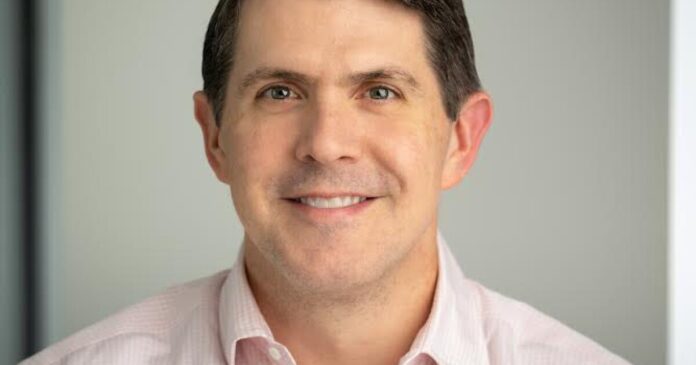
North Carolina needs to shift how its pension fund is managed and how it makes its investments to hit key benchmarks, State Treasurer Brad Briner told a legislative committee last week.
Briner, a fist-term Republican, said North Carolina’s $127 billion in pension investments could be as much as $16 billion higher if the state had hit a benchmark of a 6.5% annual return on its investment.
“The challenge in the pension fund is very clearly the investment side,” Briner told members of the House Oversight Committee, noting that the N.C. General Assembly has made its necessary contribution to the fund in 83 of the last 84 years.
Dale Folwell, Briner’s predecessor, was frequently criticized for leaving too much of the state’s pension fund in cash, a cautious strategy that protected money but led to the state missing out on gains from a roaring stock market.
Briner is hoping the fund can realize greater returns by shifting the assets in which it is allowed to invest and how those funds are overseen, two efforts where he needs help from the General Assembly. Part of Briner’s plan is to remove sole power over state pension fund investments from his own hands.
“Simply put, I think more heads are better than one when it comes to having a disciplined long-term investment strategy. And so I think having this kind of concentrated power in a single official, elected or otherwise, doesn’t really make sense,” Briner told the House Oversight Committee last week.
To that end, Briner has recommended a bill entitled the State Investment Modernization Act that has been introduced in both the House and Senate. It would create the North Carolina Investment Authority, whose five-member board would oversee investment decisions.
Briner would sit on the board along with four appointments. Those appointments would come from the treasurer, Senate President Pro Tempore Phil Berger, Speaker of the House Destin Hall and Gov. Josh Stein. The proposed law would require each to have at least a decade of investment experience.
Briner noted that sole fiduciaries manage pension funds in only two states other than North Carolina. The performance of pension funds in Connecticut and New York has, Briner said, also lagged behind the national average.
Part of the problem, Briner said, is that when responsibility lies solely with one person, it could lead to that person being overly cautious with funds whose growth requires accepting some degree of risk.
“It is my intent to surrender some of the sole fiduciary power of the treasurer because that is the right thing to do for delivering those investment returns,” Briner said.
Raise cap on certain investments?
North Carolina’s pension funds have experienced 5% returns over the past 20 years. That’s in part due to the nature of the markets, Briner told legislators last week.
Earning the annual 6.5% return target, Briner said, “was really hard to do unless you were fully in the stock market, and that’s a risk level that’s probably not appropriate for us as a state. With higher interest rates, it’s actually easier to make 6.5%.”
Doing that will be easier, Briner said, if the General Assembly lifts limits imposed more than a decade ago on the kinds of assets in which the pension fund’s money can be invested.
Caps can work, Briner told lawmakers, if they are adjusted every quarter. But that’s not realistic, the state treasurer said.
“If we’re going to update them every 10 or 15 years, then we should be much less prescriptive on a line-by-line item because things change. Cryptocurrencies did not exist a decade ago, and certainly zero interest rate fixed income was not interesting a decade ago. But things change,” Briner said.
One place in which Briner and his team would like to be able to invest more of the pension fund is in non-investment-grade fixed income. That includes mortgages and structured products.
“It typically is lower risk and lower return, but on a risk and return basis it’s pretty interesting to us right now. We are largely capped, statutorily, at 7.5% and we are essentially there,” Briner said.
Instead of capping investment in certain assets with statute, Briner is asking the General Assembly to allow the newly created Investment Authority board to define an acceptable level of risk for its investment. To do that, the board would set a range of how much to invest in equities and how much to invest in debt.
Under Briner’s proposal, the board would set that risk level every two years. It would need to consider its long-term returns, as well as the positions taken by other public pension funds.
Interest in crypto?
Briner is also asking the General Assembly for permission to make an initial investment of as much as 5% of the state’s retirement fund in digital assets such as cryptocurrencies, non fungible tokens or stablecoins.
Still, the treasurer also sounded a warning about the volatility of crypto currencies and warned that he believes they are likely too volatile for the state pension fund to invest in them.
“There probably is a role for them over time in a very modest proportion, but I’m not sure what that role is at the immediate moment,” Briner said, noting that crypto is widely seen as a hedge against the value of the U.S. dollar.
Some Democrats met Briner’s curiosity in crypto with skepticism, questioning how digital assets translate to monetary value.
Rep. Maria Cervania, a Wake County Democrat, said, “I invest in gold, and if I was going to get a payback I could actually receive that gold bar of like $400,000. But I can’t get anything back from Bitcoin that’s tangible.”
A crypto wallet is no different than a digital bank ledger, Briner responded.
“It is a ledger entry that is yours. And you could argue the value of that. It’s not tangible, it’s ethereal, but in the end it’s the promise that’s behind that of money that we all collectively believe,” Briner said.



